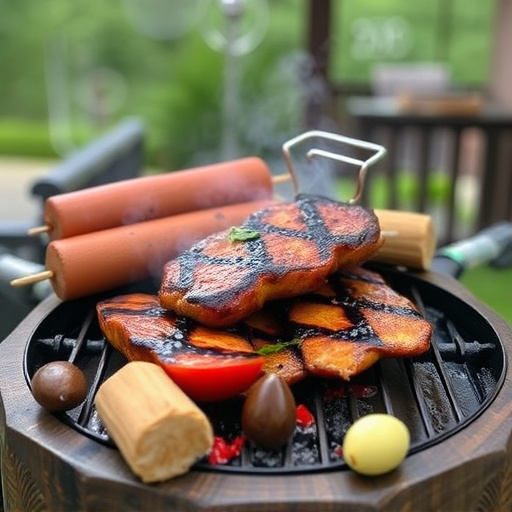To achieve tender, delicious BBQ beef ribs, start with well-marbled, high-quality full ribs, remove membranes, score meat, and pre-cook/dry for optimal flavor and texture. Choose between St. Louis or baby back cuts based on cooking method: slow-cooking or quicker grilling/roasting. Freshness and rib age impact tenderness; freshly butchered ribs aged a few weeks offer best results.
“Unleash the ultimate BBQ experience with perfectly cooked beef ribs that melt in your mouth! This comprehensive guide takes you on a journey from choosing the best ribs to mastering the art of smoking and finishing. Learn about the science behind tender ribs, exploring dry aging and brining techniques for maximum flavor and tenderness. Discover the ideal smoking temperatures and time-tested methods to create a mouthwatering BBQ beef ribs recipe that will impress any palate.”
- Choosing and Preparing the Best Ribs
- – Types of beef ribs: St. Louis cut vs. baby back ribs
- – Selecting quality ribs: Age, marbling, and freshness
- – Pre-cooking and drying ribs for maximum tenderness
Choosing and Preparing the Best Ribs
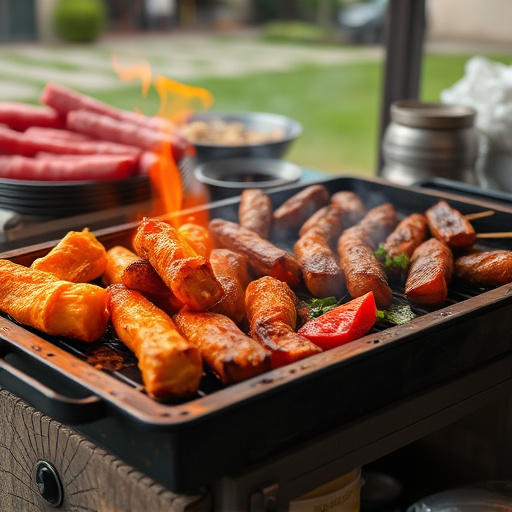
When it comes to achieving ultimate tenderness in your BBQ beef ribs recipe, starting with the right cut is paramount. Look for meaty, full ribs with visible marbling; this natural fat will render during cooking, adding flavor and keeping your ribs moist. Avoid thin, tough cuts or those with excessive cartilage, as they won’t yield the same results.
Before cooking, prepare your ribs properly. Remove any membrane on the bone side of the rack; this thin, sticky layer can prevent tenderizing sauces from adhering. Score the surface of the meat in a crisscross pattern to help break down tough connective tissues during slow-cooking. This simple step ensures that your ribs become incredibly tender and easily pull apart.
– Types of beef ribs: St. Louis cut vs. baby back ribs
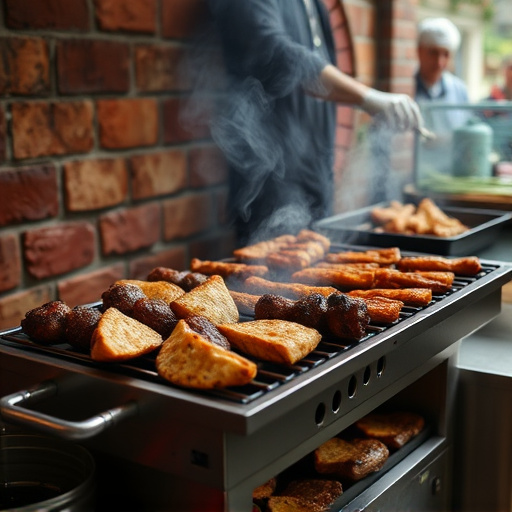
When it comes to BBQ beef ribs recipes, two cuts stand out for their unique characteristics and ultimate tenderness when cooked with love. The St. Louis cut, also known as “meaty ribs” or “short ribs,” is a popular choice due to its generous marbling and robust flavor. These ribs are ideal for slow-cooking methods like smoking or braising, ensuring each bite is packed with rich, mouthwatering beefy juices.
On the other hand, baby back ribs offer a slightly leaner profile but retain exceptional tenderness. Named for their smaller size and location closer to the spine, they require less time to cook and often pair well with quicker cooking techniques like grilling or oven roasting. Both cuts have their advocates, each delivering its own distinct flavor and texture in the world of BBQ beef ribs recipes.
– Selecting quality ribs: Age, marbling, and freshness
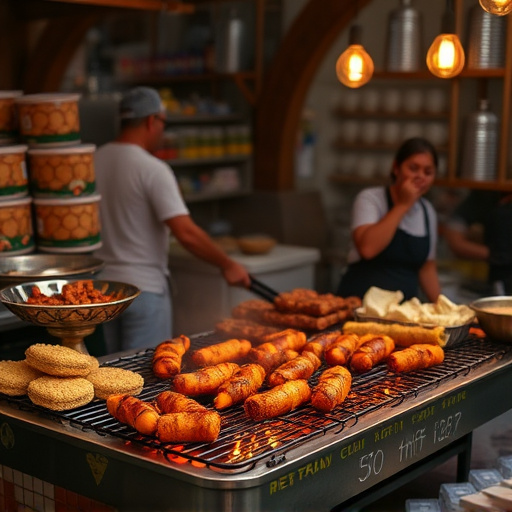
When it comes to achieving ultimate tenderness in your BBQ beef ribs recipe, selecting high-quality ribs is paramount. Look for ribs that are well-marbled—this means the meat is dotted with small pockets of fat, which not only adds flavor but also helps keep the ribs moist during the slow cooking process. Choose cuts with a good amount of meaty bone attachment and minimal excess fat. Freshness counts too; opt for ribs that are gently pinkish-red in color, firm to the touch, and with no signs of discoloration or spoilage.
Age is another factor to consider. Younger ribs may be more lean, potentially leading to dryness when cooked extensively. Older ribs, while they might benefit from longer cooking times, can become tough if not handled properly. Freshly butchered ribs that are a few weeks old are often ideal for achieving that perfect balance of tenderness and flavor in your BBQ beef ribs recipe.
– Pre-cooking and drying ribs for maximum tenderness
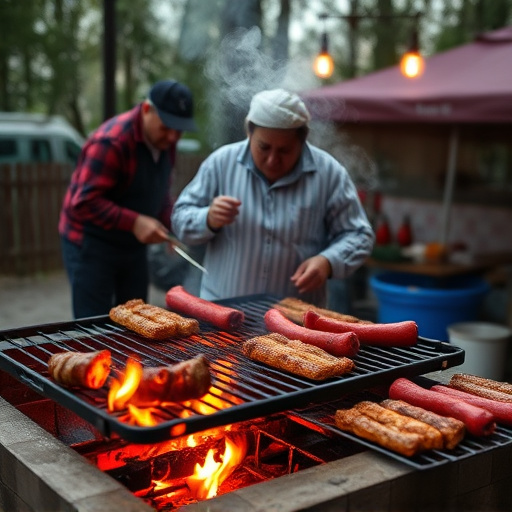
To achieve ultimate tenderness in your BBQ beef ribs recipe, pre-cooking and drying is a game-changer. Start by removing any excess fat from the ribs, as this can hinder even cooking and contribute to a tough texture. After trimming, gently pull apart the rib bones to create a gap between each bone, allowing marinate or dry rub to penetrate deeper. This step ensures that your seasoning not only flavors but also tenderizes the meat.
Following pre-cooking, drying the ribs is crucial. You can do this in the oven at a low temperature (around 200°F or 93°C) for several hours until the ribs are almost dry to the touch. This process helps to break down collagen, transforming it into gelatin, which results in incredibly tender and juicy ribs when they’re eventually cooked on the grill.
